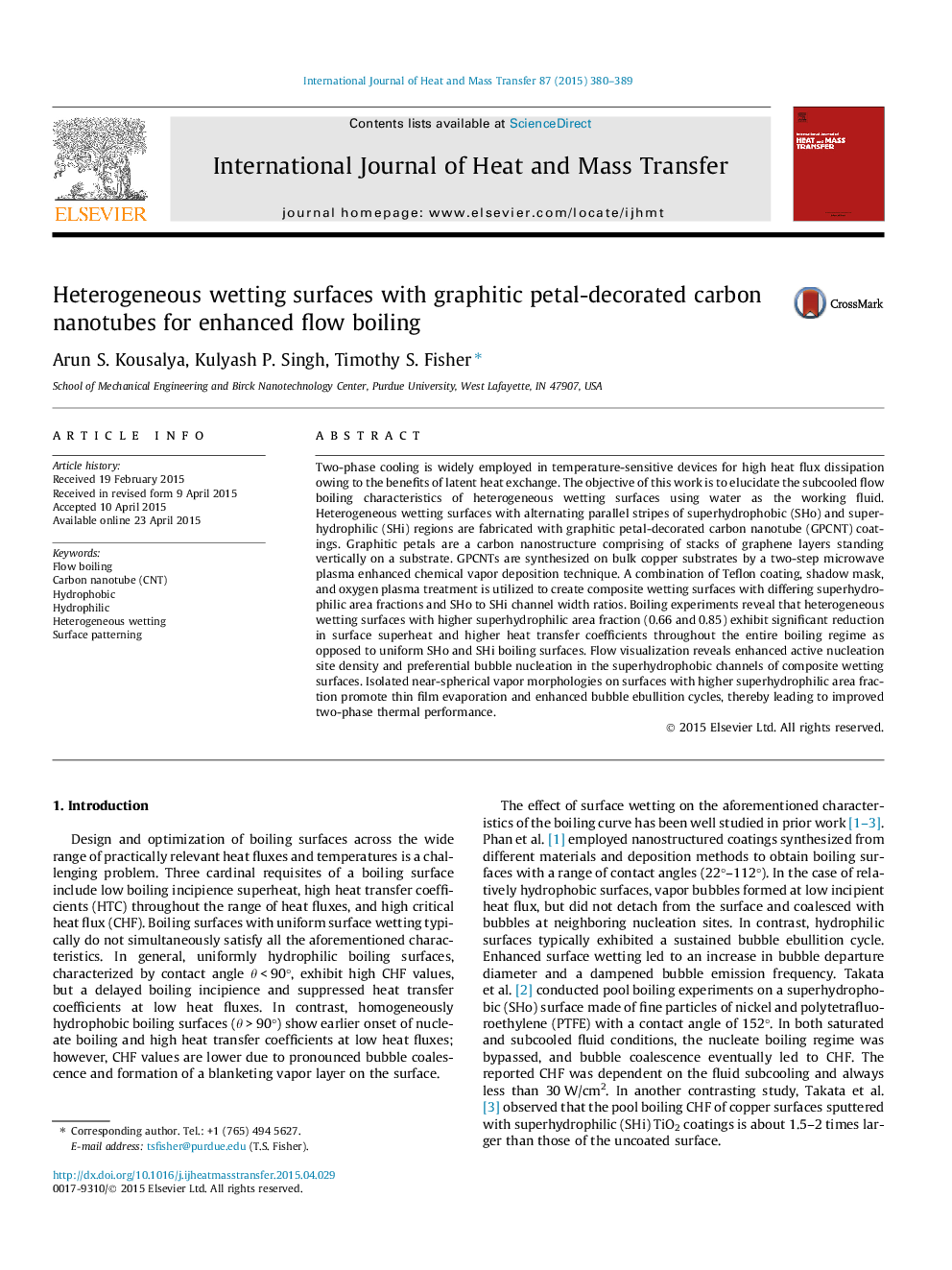| Article ID | Journal | Published Year | Pages | File Type |
|---|---|---|---|---|
| 657125 | International Journal of Heat and Mass Transfer | 2015 | 10 Pages |
Abstract
Two-phase cooling is widely employed in temperature-sensitive devices for high heat flux dissipation owing to the benefits of latent heat exchange. The objective of this work is to elucidate the subcooled flow boiling characteristics of heterogeneous wetting surfaces using water as the working fluid. Heterogeneous wetting surfaces with alternating parallel stripes of superhydrophobic (SHo) and superhydrophilic (SHi) regions are fabricated with graphitic petal-decorated carbon nanotube (GPCNT) coatings. Graphitic petals are a carbon nanostructure comprising of stacks of graphene layers standing vertically on a substrate. GPCNTs are synthesized on bulk copper substrates by a two-step microwave plasma enhanced chemical vapor deposition technique. A combination of Teflon coating, shadow mask, and oxygen plasma treatment is utilized to create composite wetting surfaces with differing superhydrophilic area fractions and SHo to SHi channel width ratios. Boiling experiments reveal that heterogeneous wetting surfaces with higher superhydrophilic area fraction (0.66 and 0.85) exhibit significant reduction in surface superheat and higher heat transfer coefficients throughout the entire boiling regime as opposed to uniform SHo and SHi boiling surfaces. Flow visualization reveals enhanced active nucleation site density and preferential bubble nucleation in the superhydrophobic channels of composite wetting surfaces. Isolated near-spherical vapor morphologies on surfaces with higher superhydrophilic area fraction promote thin film evaporation and enhanced bubble ebullition cycles, thereby leading to improved two-phase thermal performance.
Related Topics
Physical Sciences and Engineering
Chemical Engineering
Fluid Flow and Transfer Processes
Authors
Arun S. Kousalya, Kulyash P. Singh, Timothy S. Fisher,
